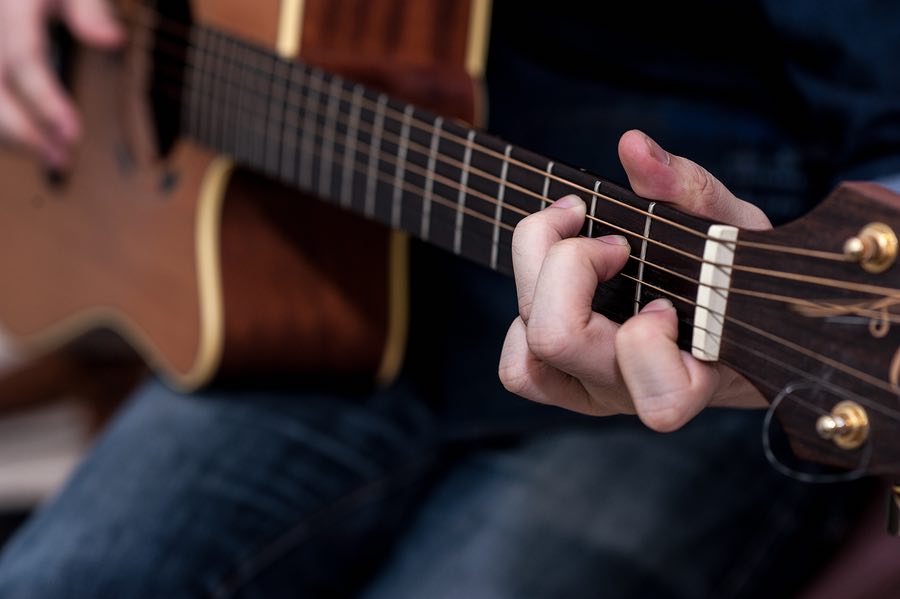Bigstock photo

I still remember the frustration struggling with the C and F major chord. Like it would never gonna work.
I kept practicing every day and then all of a sudden there it was. The chord sounded perfectly clear. It felt like it happened out of the blue, but I knew it was the result of lots of practice. It was my first guitar victory.
To get a good sounding chord there are several things you need to pay attention to, observe, apply and check repeatedly.
Good sounding chords is not an overnight thing. It’s also not the hardest thing in the world but it takes time, regular practice and perseverance.
If you implement these 10 tips during practice you will definitely get there. Practicing will be a lot more effective and results are just around the corner.
Here are they keys:
1 – Bend your knuckles
Make sure to bend all your knuckles (1st, 2nd, 3rd and 4th). Avoid any straight fingers, they can cause your chords to sound muffled. The only time you can straighten your finger is when you need to bar a chord. (barre chords)
2 – As close to the fret as possible.
Place your fingers as close to the fret as possible. Don’t place your fingers on the fret (metal fret wire), it causes buzzing. Not every chord allows all fingers to be placed right behind the fret (for example: A major chord), but try to place them as close as possible.Continue Reading


